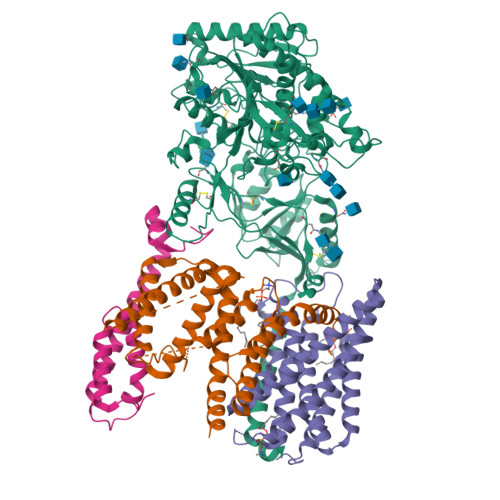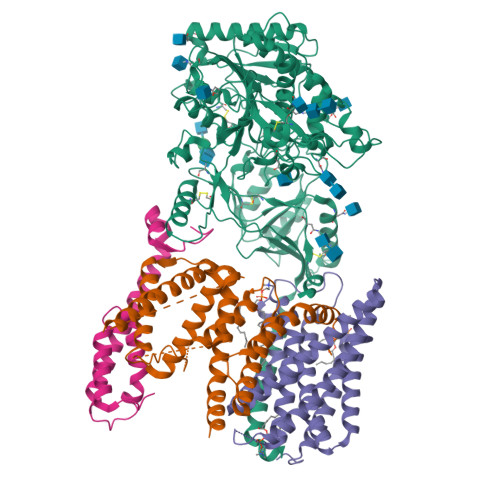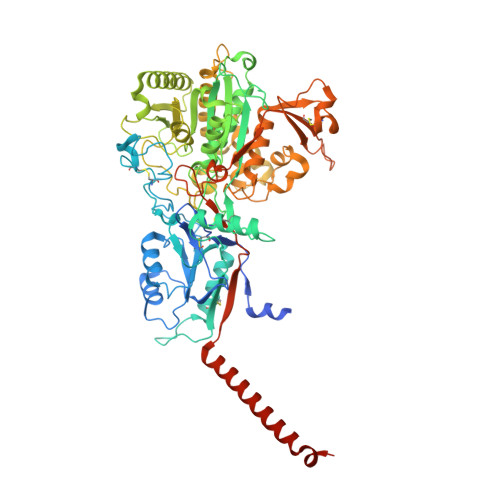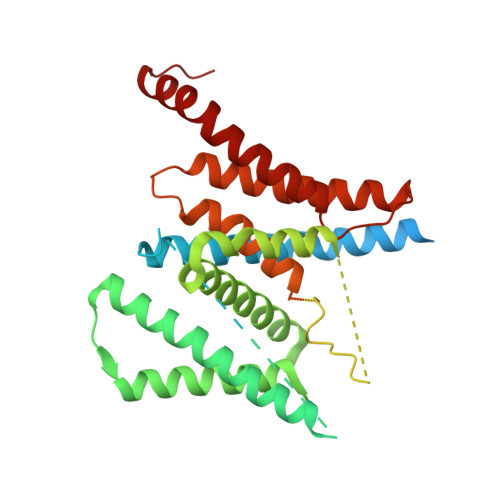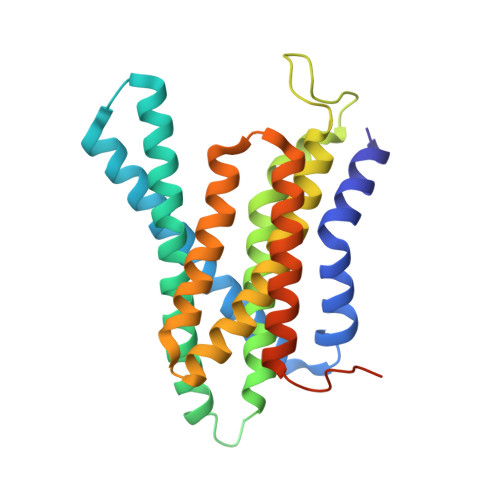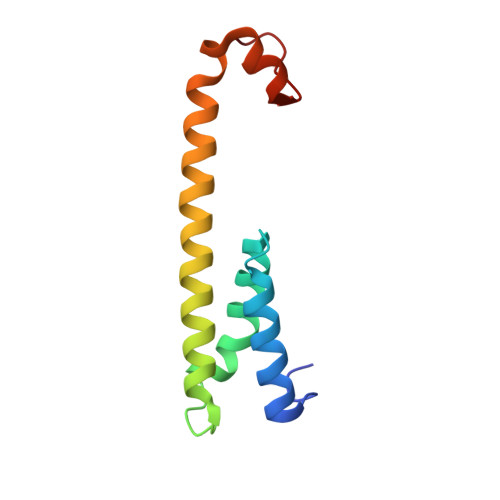Apo and A beta 46-bound gamma-secretase structures provide insights into amyloid-beta processing by the APH-1B isoform.
Odorcic, I., Hamed, M.B., Lismont, S., Chavez-Gutierrez, L., Efremov, R.G.(2024) Nat Commun 15: 4479-4479
- PubMed: 38802343
- DOI: https://doi.org/10.1038/s41467-024-48776-2
- Primary Citation of Related Structures:
8OQY, 8OQZ - PubMed Abstract:
Deposition of amyloid-β (Aβ) peptides in the brain is a hallmark of Alzheimer's disease. Aβs are generated through sequential proteolysis of the amyloid precursor protein by the γ-secretase complexes (GSECs). Aβ peptide length, modulated by the Presenilin (PSEN) and APH-1 subunits of GSEC, is critical for Alzheimer's pathogenesis. Despite high relevance, mechanistic understanding of the proteolysis of Aβ, and its modulation by APH-1, remain incomplete. Here, we report cryo-EM structures of human GSEC (PSEN1/APH-1B) reconstituted into lipid nanodiscs in apo form and in complex with the intermediate Aβ46 substrate without cross-linking. We find that three non-conserved and structurally divergent APH-1 regions establish contacts with PSEN1, and that substrate-binding induces concerted rearrangements in one of the identified PSEN1/APH-1 interfaces, providing structural basis for APH-1 allosteric-like effects. In addition, the GSEC-Aβ46 structure reveals an interaction between Aβ46 and loop 1 PSEN1 , and identifies three other H-bonding interactions that, according to functional validation, are required for substrate recognition and efficient sequential catalysis.
Organizational Affiliation:
Center for Structural Biology, VIB, Brussels, Belgium.








